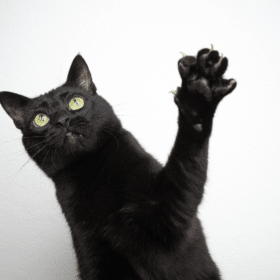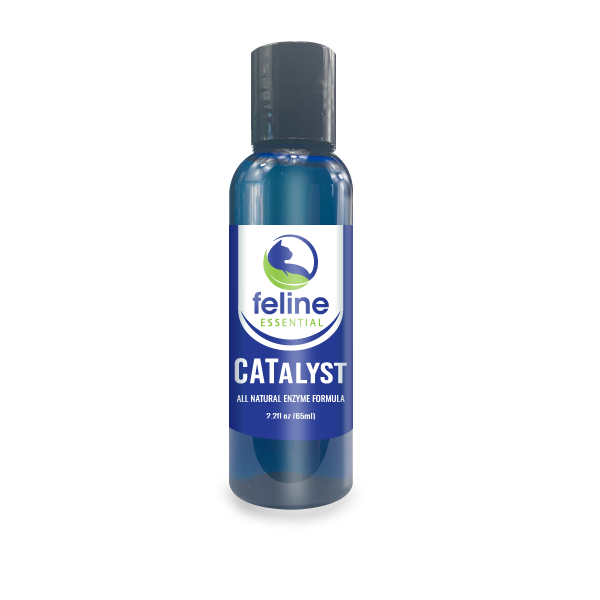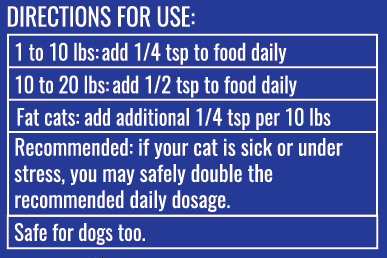Symptoms, Causes & Natural Remedies
Pillow Foot (Pododermatitis), a condition also known as “feline plasma cell pododermatitis,” is a relatively rare ailment that affects the paw pads of cats. The name “Pillow Foot” comes from the swollen, soft, and often painful appearance of the affected pads. In this guide we’ll discuss the symptoms, causes, and natural remedies you can use for Pillow Foot in cats.
Symptoms of Pillow Foot in Cats
- Recognizing the signs of Pillow Foot is the first step in addressing this condition. Symptoms include:
- Swollen Paw Pads: The pads may appear puffy and soft to the touch, sometimes resembling a pillow.
- Discoloration: Affected pads can turn a purplish or bluish color due to inflammation.
- Ulceration and Bleeding: In severe cases, the pads may develop ulcers and bleed.
- Lameness and Pain: Cats may show signs of discomfort or pain when walking or avoiding putting weight on the affected paw.
- Licking and Chewing: Cats might excessively lick or chew at their paws in an attempt to soothe the discomfort.
- General Discomfort: Your cat may seem more irritable or less active than usual.
Causes of Pillow Foot in Cats
The exact cause of Pillow Foot is not entirely understood, but several factors are believed to contribute:
- Immune System Dysfunction: Pillow Foot is often considered an autoimmune disorder, where the cat’s immune system mistakenly attacks its own tissues.
- Sensitivities: Allergic reactions/sensitivities to food, environmental chemicals, or other substances might trigger flare-ups.
- Infections: Bacterial, fungal, or viral infections can cause or exacerbate the condition.
- Inflammation: There are many things that can contribute to inflammation in cats, but it’s very important to address the inflammation in order to relieve symptoms.
Natural Treatments for Pillow Foot in Cats:
While veterinary care is essential for diagnosing Pillow Foot, several natural remedies can support your cat’s healing process and reduce inflammation. Partnering with a holistic veterinarian to tailor remedies specific to your kitty is recommended.
1. Antioxidant Supplements:
CATalyst Antioxidant Enzyme Formula for Cats: This supplement can help reduce inflammation and support the immune system. Antioxidants fight free radicals, which can cause oxidative stress and contribute to inflammation.
2. Dietary Changes:
Carbohydrate-Free Diet: Carbohydrates increase inflammation in the body. Taking your cat off a dry food/kibble diet will help manage the symptoms of Pillow Foot. A diet that mimics a cat’s natural prey can provide essential nutrients without the inflammatory effects of grains and other carbohydrates.
3. Topical Treatments:
Coconut Oil: Applying coconut oil to the affected paw pads can soothe inflammation and promote healing. Coconut oil has natural antibacterial and antifungal properties, which can prevent infections and aid in the repair of damaged tissue.
4. Stress Reduction:
Environmental Enrichment: Providing a stress-free environment with plenty of mental and physical stimulation can improve your cat’s overall well-being. This includes interactive toys, scratching posts, and comfortable resting areas.
Calming Supplements: Natural calming aids, such as Cat Calm Stress Reducing Formula can help reduce stress and support the immune system.
5. Preventative Measures:
Regular Paw Inspections: Regularly check your cat’s paws for any signs of swelling, discoloration, or lesions.
Toxins: Try to keep your cats paw pads away from chemical toxins like chemical floor and counter cleaners or scented litters.
Balanced Diet: Ensure your cat has a well-balanced diet tailored to their specific needs, potentially incorporating supplements as advised by your vet.





